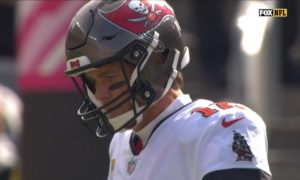I have gathered over the years of writing here that I tend to be more receptive than most to a greater intrusion of technological advancements and analytical approaches that serve as a supplement to the more traditional measures of quantifying, coaching, and studying the game of football.
I do think that it is a general evolutionary process that is close to inevitable that as the available technology increases that is relevant to the sport, the more it will filter into the game itself. We have seen this with just about every sport, from baseball to NASCAR racing.
The general impression of ‘analytics’ is the ‘Moneyball’ approach, and unfortunately the Cleveland Browns are largely the face of that notion in the NFL right now, having on their staff John DePodesta, who was one of the principle players on the sabermetric movement in baseball.
Still, to some degree or another, every team in the NFL at this point uses some form of analytical data, or at least collects or has access to information. The extent to which they actually put it to use can be debated. The Pittsburgh Steelers, for example, nominally have such personnel on their staff, but Head Coach Mike Tomlin and General Manager Kevin Colbert do not seem to put too much weight into it.
Still, I do find it quite interesting that, beginning this year, teams will be given greater access to player-tracking data that is collected by the league in games. Last month, the Competition Committee—on which Tomlin serves, it is perhaps worth noting—approved a plan that will make tracking data for all players available to all teams.
Previously, teams were only given data about their own players and only for the previous two seasons. Now they will be able to collect information on their opponents, which could have an effect on how teams scout their future opponents, and potentially even how they evaluate free agents, even if only slightly.
As Tom Pelissero noted in an article last month, the NFL has been collecting data on players since 2014 using sensors in their shoulder pads. One superficial way in which this data has been passed along to consumers is in the development of the ‘Next Gen Stats’ featured on the league’s website, a highlight of which is the ‘fastest’ plays of the season, on which players achieved the highest mile-per-hour pace.
There are no intentions, or at least plans, to make this data available to anybody outside of the NFL teams, and that of course would not be expected, but it surely would be interesting to see. While they say that ‘the tape don’t lie’, it can always be supplemented with hard numbers, and tracking that is incorporated right onto the players’ person could be quite illuminating, with a wide variety of applications in the right hands.








